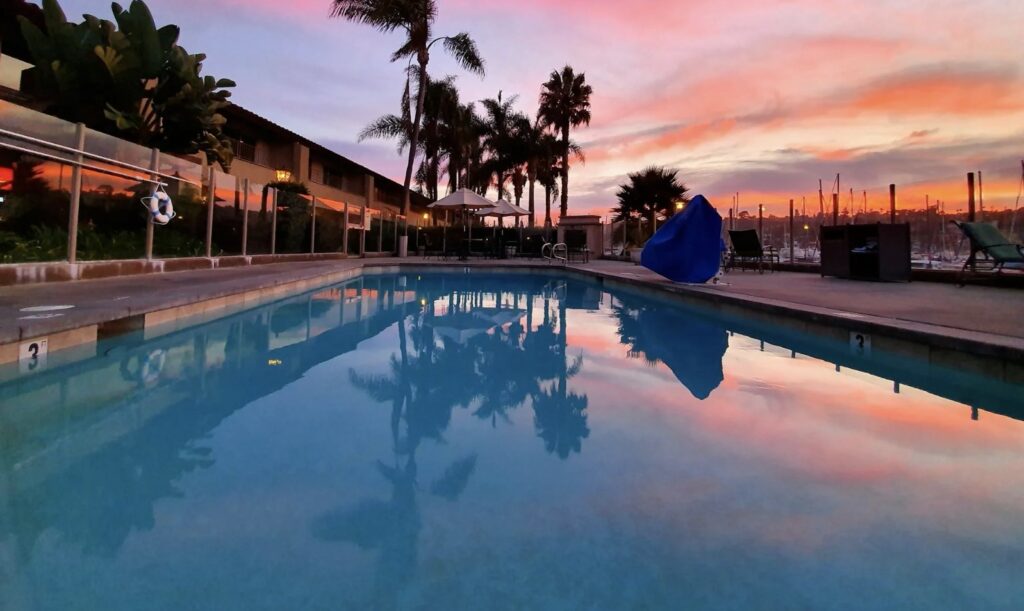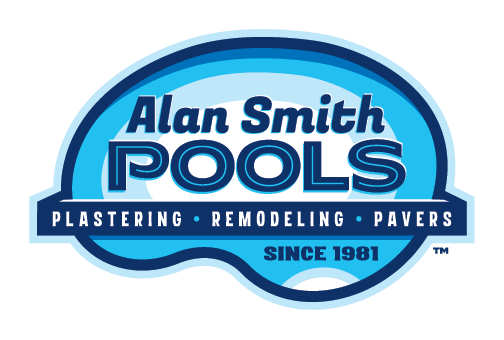This is the row of tile directly above the pool finish and just below the deck. Typically, waterline tile is 6”x6”. The water level of the pool is usually halfway up the tile. The reason tile is necessary in a pool and spa is because plaster or other pool finishes are not meant to be exposed to the sun and elements.
The raised bond beam is the part of the pool wall that is elevated above the lower level of the decking. This is where homeowners tend to get creative, since it the most visible tile in the pool. Consider installing smaller 1”x”1, 2”x”2, or 3”x 3″ tiles on the raised area for decorative appeal. This is also a common area to install accent tiles.
Another focal point of your pool is the face of the spa walls. When water flows from the spa to the pool, it pulls attention to the spillway and spa wall. Pay careful attention to the grout and tile colors you select, so that they don’t clash. Spillways are another opportunity to get creative – from widening an existing spillway, to creating two spillways, to covering the top the spillway with coping.
The trim is a small line of non-slip tile at the outside edge of steps and seats that help bathers see their depths. This option also adds a decorative detail to the pool and spa. Spotters are a diamond set tile that are typically set about 12” apart.
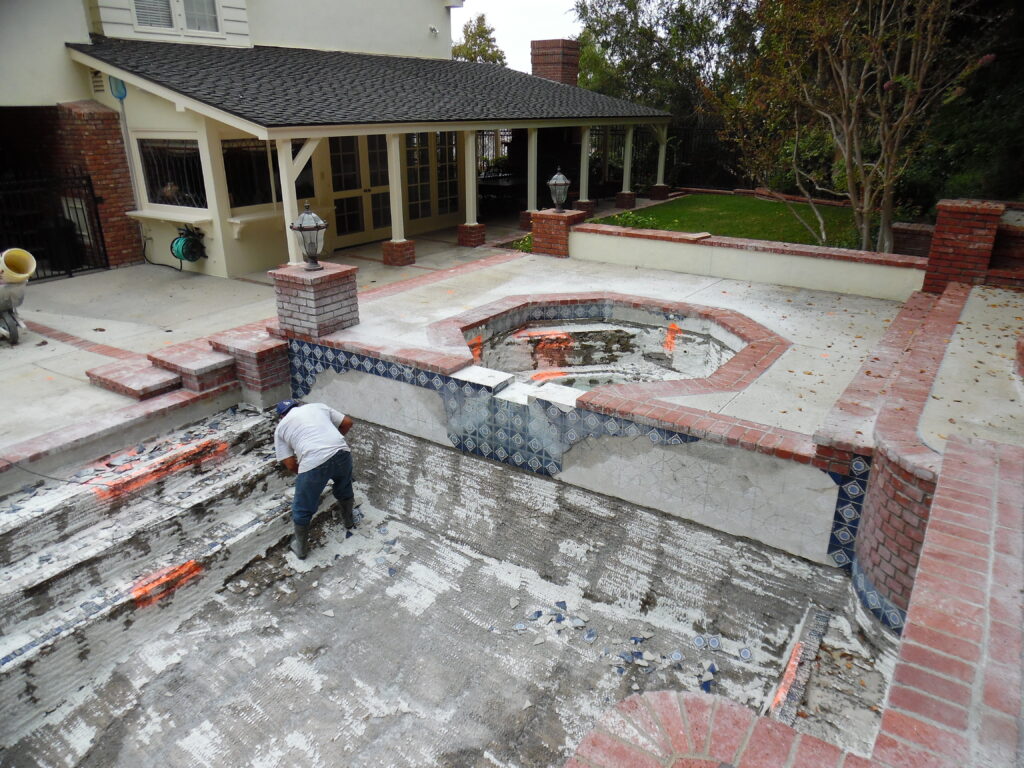

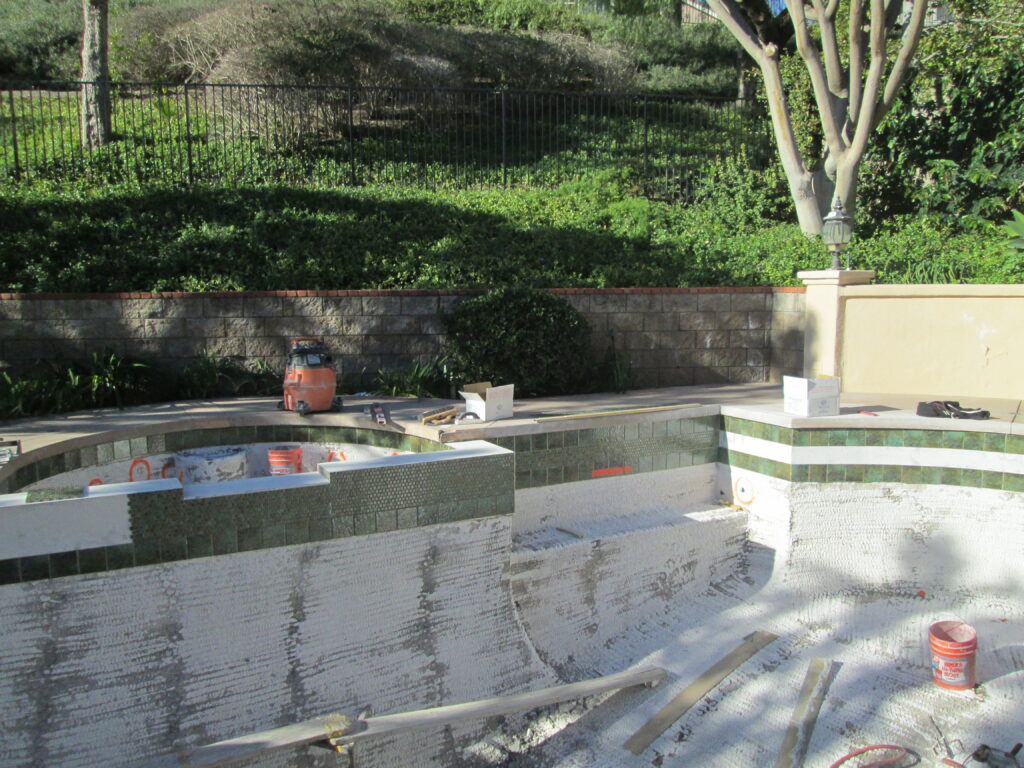

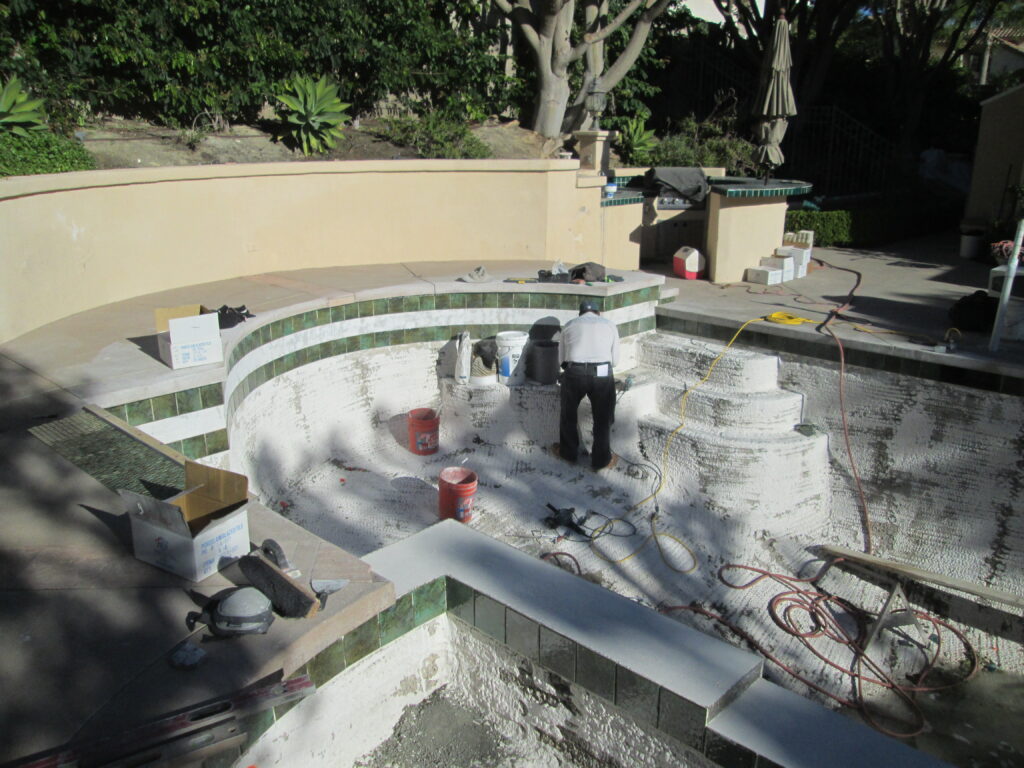
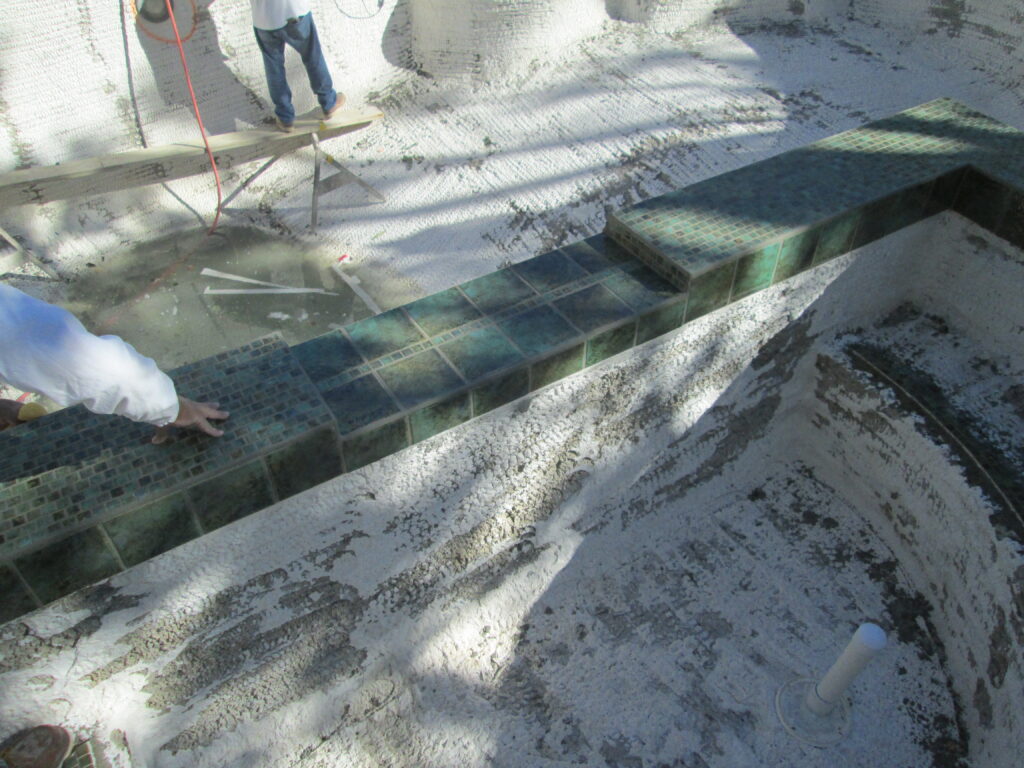
1. Chip away, remove and dispose of old tile
2. Create an even surface by grinding down the area under the old tile, or building up areas that are not even with a mortar bed. This preparatory step ensures that there are no high or low spots that the tile will be laid against. We want the tile to be flush with the plaster.
3. Cut tiles for detail work around curves and on spillways. This is where the true skill and craftsmanship is very apparent.
4. Spread out thin set bonding agent where the tile will be placed on waterline. The thin set must be a swimming pool specific product. This is the “glue” that holds the tile to the edge of the pool.
5. Lay porcelain pool tile on the thin set. It is important that the tile is a pool specific, porcelain tile. The tiles are individually pressed into the thin set by hand or rubber mallet. It is important to let the tile set until firm.
6. Once the tile is firmly in place, we now spread our grout using a rubber floating tool. We will then sponge clean all excess grout.
Pool Tile – Contact us for a free estimate




